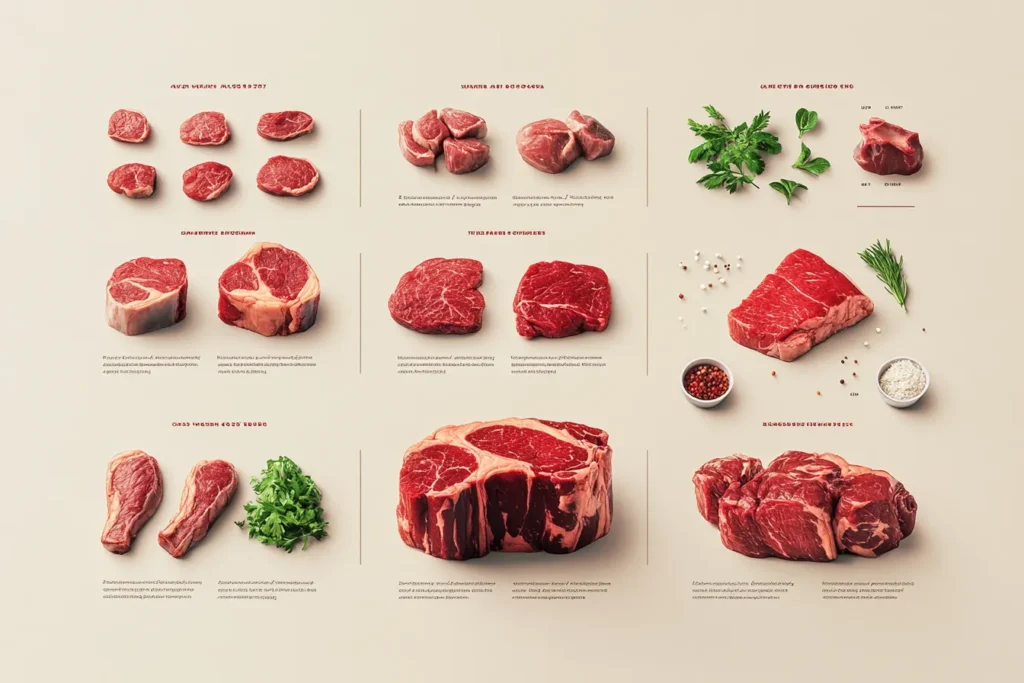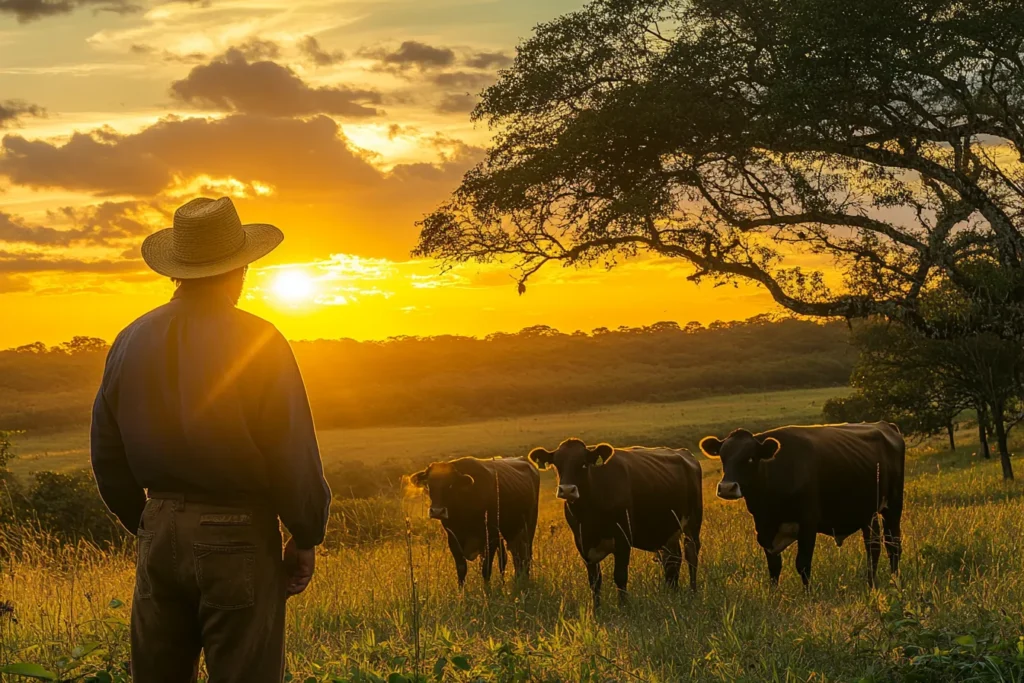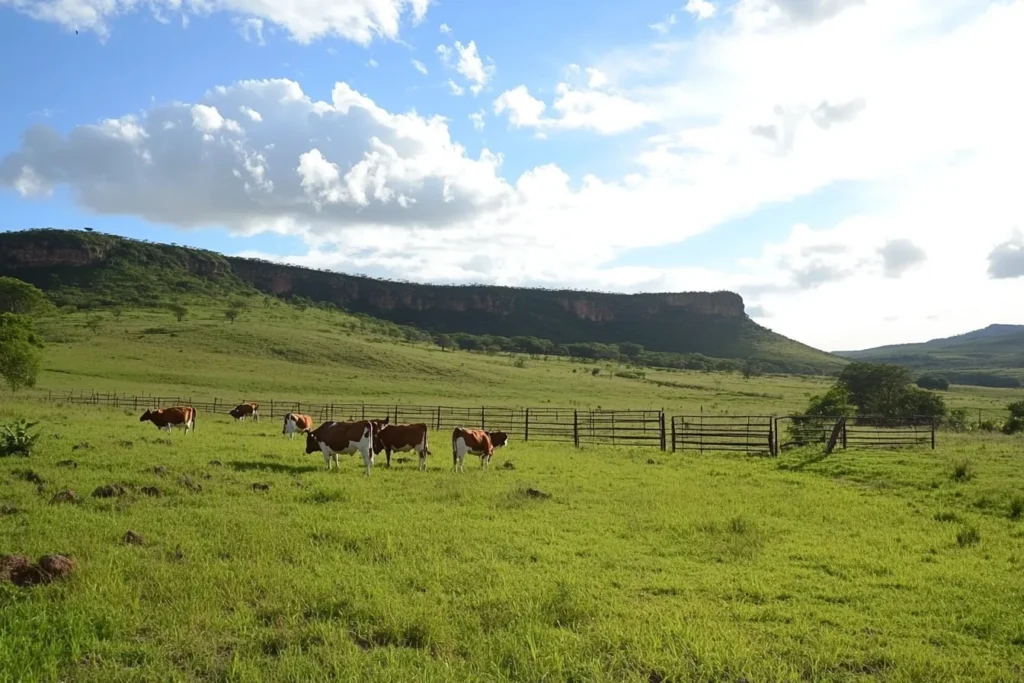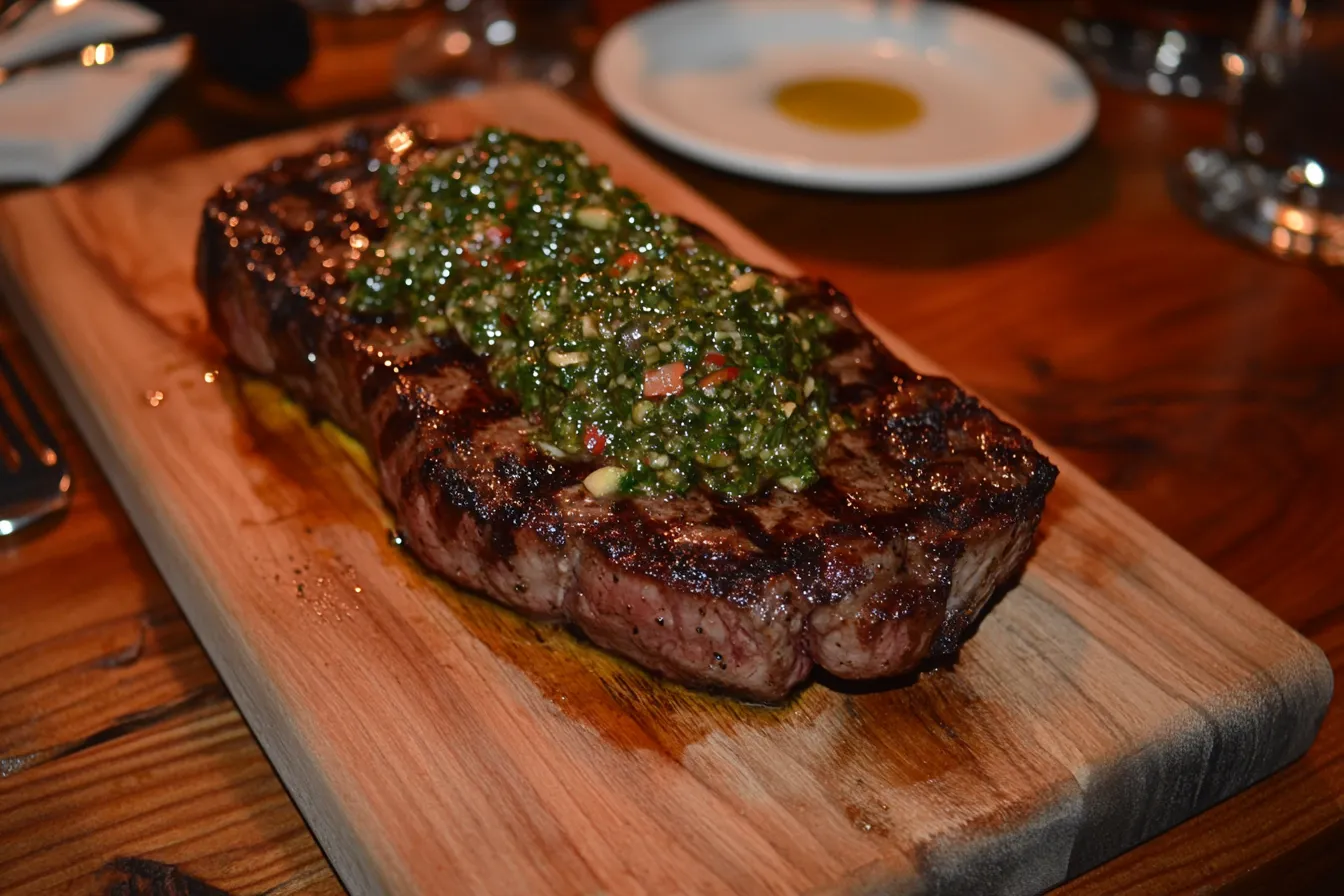Table of Contents
Introduction
If you haven’t heard of Paraguayan beef yet, buckle up, foodie friend, because you’re in for a sizzling surprise. Picture this: juicy, grass-fed steaks sizzling on your backyard grill, releasing an aroma that sends your taste buds into a tailspin. Sounds like a summer cookout dream, right? Now, imagine this meat is leaner, healthier, and comes from a land where cattle roam free, munching on lush green pastures year-round. That’s not Texas — that’s Paraguay 🇵🇾.
In the U.S., where grilling is practically a national pastime, we’re always on the lookout for the next big thing in beef. Enter Paraguayan beef, a premium export that’s been quietly sneaking into the hearts — and shopping carts — of American meat lovers. It’s flavorful, tender, ethical, and packed with nutrients. And yes, it’s totally grill-worthy..Beef Tenderloin
“Paraguayan beef is like discovering that one local burger joint that’s way better than any fast-food chain — except this burger joint is a country.” 🍔🔥
In this juicy article, we’re taking a deep dive into the world of Paraguayan beef. From how it’s raised to why it’s better for your health, your plate, and even the planet, we’ve got it all covered.
Let’s meat our new favorite protein.

What is Paraguayan Beef?
A Brief History of Beef in Paraguay
Paraguay isn’t just a landlocked country in South America — it’s a beef powerhouse. Ranching has been part of its culture for centuries, and today, beef is one of Paraguay’s top exports. The country’s cattle industry began booming in the early 20th century and never looked back.
Most cattle in Paraguay are Zebu or European breeds, chosen for their quality meat and ability to thrive in the region’s warm climate. Over time, local ranchers refined their techniques, passing down methods that focus on low-stress, ethical cattle-raising. No overcrowded feedlots. No synthetic growth hormones. Just cows and grass, the way nature intended.
Grass-Fed Goodness: The Natural Farming Methods
Unlike industrial farms in some countries, Paraguay’s cattle roam free across natural, pesticide-free grasslands. That means their meat ends up being leaner, richer in flavor, and free of harmful additives. These cows graze on native plants, which contribute to the meat’s earthy, robust flavor.
And no, it’s not just hype.
“Grass-fed beef from Paraguay has a unique taste — a bold, clean flavor that speaks of open air and wild grass,” says grill-master and foodie blogger Rick Granger.
Less grain, more game. That’s how we like it.
Unique Flavor Profile of Paraguayan Beef
Alright, let’s talk taste. Paraguayan beef hits different. It’s not just beefy — it’s bold, juicy, and deeply savory. Thanks to a lifetime of grazing, the meat develops a flavor that’s slightly more complex than grain-fed beef. You’ll notice a firmer texture, a richer red color, and marbling that melts like butter when grilled.
Whether you’re throwing on a ribeye, sirloin, or even a humble chuck, expect a mouthful of meaty magic every time. 🍽️
Why Paraguay? The Perfect Climate for Cattle
Geography and Environment
Paraguay may not have beaches, but it’s got something better: lush plains, rolling pastures, and a climate that’s just right for raising happy cows. With mild winters, warm summers, and abundant rainfall, it’s basically bovine paradise..Carnivore Diet Recipes
The Gran Chaco region in particular is a cattle ranching hotspot. It offers a mix of fertile soils, clean water sources, and low population density — ideal for extensive, low-impact cattle farming.
Cattle-Raising Traditions Passed Down Generations
In Paraguay, ranching isn’t just a job — it’s a legacy. Families have been raising cattle for generations, using methods that value animal welfare, sustainability, and patience. No shortcuts. Just tradition, care, and time.
This blend of old-school knowledge and modern veterinary science results in beef that’s not only tastier but ethically superior. It’s food you can feel good about eating. 💚

Health Benefits of Paraguayan Beef
Low Fat, High Protein Goodness
Trying to stay lean while still eating like a cowboy? You’re in luck. Paraguayan beef tends to be lower in fat than its grain-fed counterparts. That’s because the cows aren’t force-fed corn to fatten them up. Instead, they naturally develop a lean muscle mass.
Here’s what you get per 100g of grilled Paraguayan sirloin:
| Nutrient | Amount |
|---|---|
| Calories | 185 kcal |
| Protein | 26 g |
| Total Fat | 8 g |
| Saturated Fat | 2.5 g |
| Iron | 3.2 mg |
| Omega-3 Fatty Acids | 120 mg |
That’s some serious muscle food 💪
Rich in Omega-3s and Vitamins
Grass-fed beef isn’t just leaner — it’s richer in key nutrients. We’re talking about:
- Omega-3 fatty acids (the heart-healthy kind)
- Vitamin A and E
- Antioxidants like CLA (conjugated linoleic acid)
These help reduce inflammation, improve brain health, and support a strong immune system. So next time someone tells you red meat is bad for you, just say: “Yeah, but is it Paraguayan?” 😏
Grass-Fed vs. Grain-Fed: What’s the Difference?
Let’s break it down:
| Feature | Grass-Fed (Paraguayan) | Grain-Fed (Typical U.S.) |
|---|---|---|
| Fat Content | Lower | Higher |
| Omega-3 Levels | Higher | Lower |
| Marbling | Moderate | High |
| Flavor Profile | Earthy, natural | Buttery, rich |
| Ethical Farming | Yes | Often No |
| Antibiotic Use | Rare | Common |
“It’s like comparing a home-cooked meal to fast food,” says local rancher Ana Benítez. “You can just taste the love.”
Paraguayan Beef vs. American Beef: A Tasty Face-Off
Texture, Marbling, and Flavor
Alright, carnivores — let’s get down to the juicy details 🧐. How does Paraguayan beef stack up against American beef? Think of it like this: American beef is your classic, corn-fed quarterback — big, bold, buttery. Paraguayan beef? It’s the lean, rugged cowboy who lives off the land and knows every cow by name.
Here’s a quick beef breakdown:
| Feature | Paraguayan Beef | American Beef |
|---|---|---|
| Texture | Firm, with natural muscle tone | Softer, due to higher fat marbling |
| Marbling | Light to moderate | Heavy, especially USDA Prime cuts |
| Flavor | Earthy, wild, full-bodied | Rich, buttery, slightly sweet |
| Feeding Method | 100% Grass-fed | Mostly grain-fed |
| Antibiotic/Hormone Use | Rare | Common in conventional farming |
If you like your steak lean but flavorful, Paraguayan beef is your best bet. It’s not just a meal — it’s an experience. 😎
“Eating Paraguayan beef is like drinking a glass of wine from a small family vineyard — authentic and unforgettable.” 🍷
Cooking Times and Best Uses
Because of its leaner build, Paraguayan beef needs a little more TLC when cooking. Cook it like you would a prime USDA steak, and you might end up with a hockey puck. Nobody wants that 🥶.
Instead:
- Sear it hot and fast, then finish low and slow.
- Let it rest properly after cooking.
- Use a meat thermometer for accuracy.
Great cuts for home cooking include:
- Ribeye (best grilled or pan-seared)
- Sirloin (perfect for stir-fry or steak salads)
- Flank (marinade magic ✨)
Common Problems When Buying or Cooking Paraguayan Beef
Even the best beef can go belly-up if you don’t know what you’re doing. Here are some issues you might run into — and how to fix them like a pro..Legendary Burger
Hard to Find in Stores? Here’s Where to Look
Let’s face it — Paraguayan beef isn’t sitting next to the Oscar Mayer hot dogs at your local big-box grocery store 😅.
Solutions:
- Look for it in international grocery stores.
- Visit Latin American markets in your area.
- Try online butchers like Crowd Cow, Meat N’ Bone, or Wild Fork that specialize in global meats.
“When in doubt, go online — or ask your local butcher. They love meat chat.” 🧑🍳
Cooking It Wrong? Here’s How to Fix That
Leaner meat means less room for error. Overcook it, and you’ll end up chewing longer than a cowboy rides a bronco.
Fixes:
- Marinate overnight to keep it tender.
- Use lower temps for longer cooking.
- Rest the meat! Always rest it! 😤
A good rule of thumb: treat it like bison or venison — not fatty ribeye.
What to Avoid When Choosing a Cut
Not all beef is created equal, even from Paraguay. Here’s what to watch for:
🚫 Cuts that look too dark or dry
🚫 Frozen meat with lots of ice crystals (freezer burn = flavor loss)
🚫 No visible marbling (it needs some fat, trust us!)
Always go for fresh, vacuum-packed cuts with a bright red color and minimal moisture in the pack.
Cooking Paraguayan Beef at Home: Tips & Recipes
Okay, grill boss, time to turn your kitchen into an asado party. 🔥 Here are some classic cooking ideas that’ll turn your Paraguayan beef into a crowd favorite.
Perfect Grilled Paraguayan Ribeye Recipe
Ingredients:
- 1 Paraguayan ribeye steak (1 inch thick)
- 2 tbsp olive oil
- Salt, pepper
- Garlic powder, smoked paprika
Instructions:
- Let the steak rest at room temp for 30 minutes.
- Rub with oil and seasonings.
- Sear 2–3 mins per side on a hot grill.
- Move to indirect heat for another 5 mins.
- Rest for 10 mins, then serve with chimichurri. 💃
“The trick? Letting the meat speak for itself. No fancy sauces needed.” 😋
How to Marinate for Maximum Flavor
Paraguayan beef LOVES a good marinade. Try this:
Gaucho Marinade Recipe:
- Olive oil
- Red wine vinegar
- Fresh parsley
- Crushed garlic
- Oregano
- Red chili flakes
Let the steak soak for 6–12 hours for a flavor bomb 💣.
The Secret to Juicy, Medium-Rare Steak Every Time
Here’s the hack: Reverse sear method.
- Preheat oven to 275°F.
- Slow-cook steak in the oven until internal temp hits 115°F.
- Sear both sides in a hot pan for 1 minute.
- Boom — perfect crust outside, juicy pink inside.
Table: Nutritional Value of Paraguayan Beef vs. Others
| Nutrient (per 100g) | Paraguayan Beef | U.S. Grain-Fed Beef | Grass-Fed Australian Beef |
|---|---|---|---|
| Calories | 185 kcal | 250 kcal | 190 kcal |
| Total Fat | 8 g | 18 g | 10 g |
| Protein | 26 g | 21 g | 24 g |
| Omega-3s | 120 mg | 30 mg | 110 mg |
| Iron | 3.2 mg | 2.5 mg | 2.8 mg |
💡 Tip: Look for labels like “100% grass-fed,” “no antibiotics,” and “Paraguayan origin” for the real deal.
Where to Buy Paraguayan Beef in the U.S.
Online Retailers and Specialty Butchers
Your best bet? Online specialty meat shops:
- Wild Fork Foods
- Crowd Cow
- Meat N’ Bone
- La Carnicería Latina (NY-based)
These offer Paraguayan cuts shipped directly to your door, often vacuum-packed and flash-frozen.
Farmer’s Markets and International Stores
In cities with large Latin American communities (think Miami, Houston, L.A.), you’ll find international supermarkets and butcher shops that stock imported beef.
“Ask for carne paraguaya — you’ll get a nod of respect from the butcher.” 🧊
Sustainability and Ethics Behind Paraguayan Beef
We all love a good steak — but let’s be real: knowing where your food comes from matters more than ever. And in a world of climate crises and factory farms, Paraguayan beef is emerging as the ethical carnivore’s choice.
Humane Treatment of Cattle
Cattle in Paraguay aren’t jammed into massive feedlots like puzzle pieces. Instead, they roam freely on natural pastures, living pretty stress-free lives. These cows enjoy:
- Clean water sources
- Plenty of space to graze
- Zero forced feeding
- Minimal or no antibiotics
“In Paraguay, we treat animals with dignity. Happy cows make better beef,” says Esteban Vargas, a fourth-generation rancher.
No cages, no cruelty — just cows being cows.
Eco-Friendly Farming Practices
Paraguayan ranchers are increasingly turning toward sustainable methods that preserve land and limit environmental impact. This includes:
- Rotational grazing to prevent overgrazing
- Reforestation efforts in the Chaco region
- Using organic fertilizers and native grasses
- Avoiding hormone injections and GMO feed
This approach helps maintain the ecosystem while producing top-tier beef. In other words, it’s a win-win: 🌱 + 🥩 = 💯

FAQs
It’s time to answer your burning beef questions! 🔥 These are the most frequently asked about Paraguayan beef, especially from curious American foodies.
Is Paraguayan beef safe to eat?
Absolutely. Paraguay has strict export regulations to ensure beef is free of diseases and contaminants. Only farms certified by national health authorities can export beef — and they’re tested rigorously.
Plus, the cattle are mostly free-range and grass-fed, reducing exposure to harmful feedlot bacteria.
Why is it more flavorful than regular beef?
The secret lies in the grass. Natural grazing means Paraguayan cows develop a more nuanced flavor than grain-fed cattle. Also, the beef isn’t over-processed or frozen for years, which keeps the taste clean and rich.
“It’s like the difference between a fresh tomato from the garden and one from a can,” says chef Carla Jenkins. 🍅
Can I cook it like American beef?
Yes — but with a twist. Because it’s leaner, you’ll want to:
- Use lower cooking temps
- Let it rest longer
- Avoid overcooking (medium-rare is your best friend!)
Treat it with respect, and it’ll return the favor. 😄
Is it expensive?
It can be, especially when imported. But considering the ethical practices, flavor, and nutritional benefits, you’re paying for quality, not quantity.
Prices range from:
- $12–$18 per pound for premium ribeye
- $8–$12 for sirloin or flank
Still cheaper than a fancy steakhouse dinner, and way more satisfying when you cook it yourself! 🍽️
Where can I buy it online?
Try these trusted websites:
- Wild Fork Foods – known for global meat selections
- Meat N’ Bone – Latin American specialties
- Crowd Cow – sustainable meat direct from farms
Just search “Paraguayan beef,” and they’ll serve it up.
How do I store it properly?
Once you get your hands on some, here’s how to keep it fresh:
- Vacuum-sealed? Leave it in the fridge (up to 10 days)
- Opened package? Use within 2–3 days
- Freezing? Wrap tightly and label with date
Tip: Let frozen beef thaw in the fridge for 24 hours before cooking for best texture.
Conclusion
So, what have we learned, amigos? That Paraguayan beef isn’t just meat — it’s a movement. It’s about flavor, ethics, health, and bringing something new and exciting to your dinner table.
Whether you’re a backyard griller, a health-conscious eater, or a curious carnivore looking to mix up your meat game, this South American gem delivers.
It’s leaner. It’s greener. It’s tastier. And it’s ready for your plate. 🇵🇾🔥🥩
“Paraguayan beef is more than just food — it’s a story of land, tradition, and passion. And that’s something worth chewing on.” – Chef Luis Montoya
So the next time you’re shopping for steaks or planning a BBQ, ask yourself: Why settle for ordinary when you can go Paraguayan?

Grilled Paraguayan Ribeye Steak with Chimichurri
Ingredients
Equipment
Method
- Remove the ribeye from the fridge 30 minutes before cooking to let it reach room temperature.
- Rub the steak with olive oil, salt, pepper, garlic powder, and smoked paprika.
- Preheat grill or skillet to high heat.
- Sear the steak for 2–3 minutes per side for a nice crust.
- Move to a cooler part of the grill or reduce heat and cook for another 5–6 minutes (until internal temp reaches 130°F for medium-rare).
- Remove and let the steak rest for 10 minutes.
- While the steak rests, combine chimichurri ingredients in a bowl.
- Slice the steak and serve topped with chimichurri.
